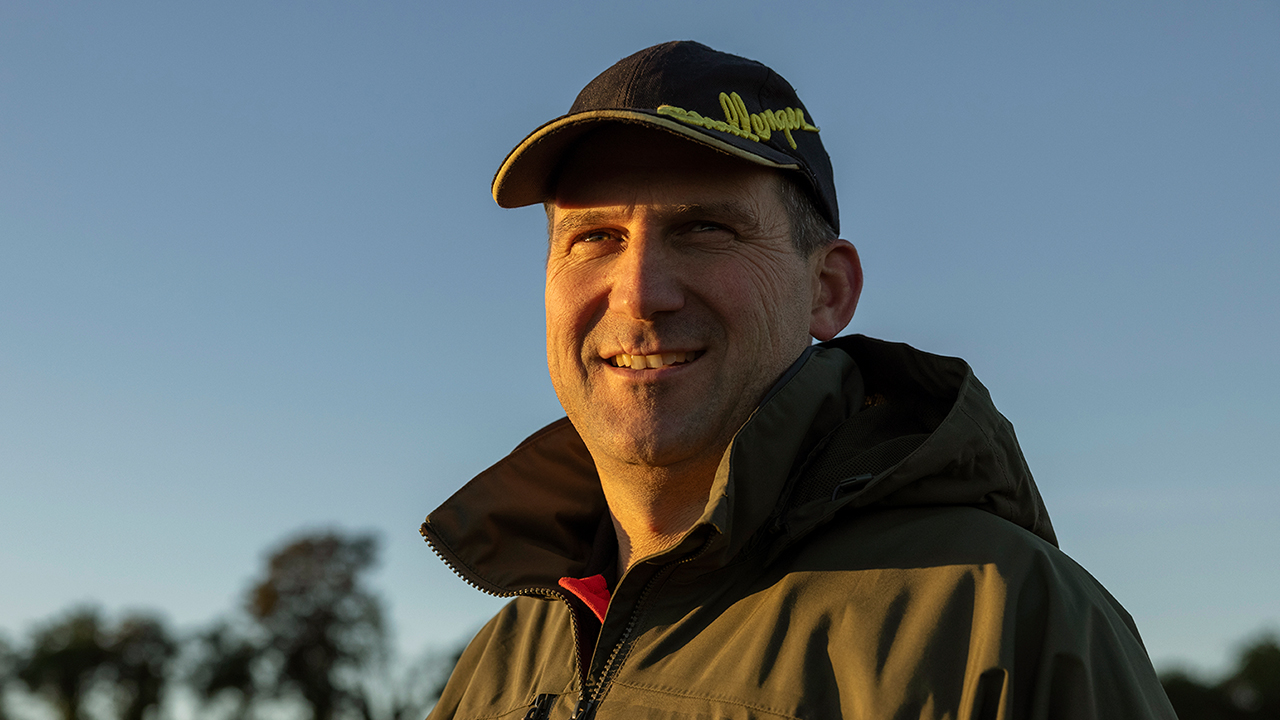Compaction caused by last season’s wet weather will exacerbate black-grass issues unless it is dealt with, warns independent soil and cultivations expert, Philip Wright.
Across the country Philip is seeing many soils with a solid surface layer, which could make achieving a fine consolidated seedbed tricky this autumn.
“Rain pummelled the soil’s surface, loosening small soil particles which have been washed into the soil’s profile and accumulated at around 7-10cm – effectively the soil, viewed as a filter, became blocked,” he explains.
“With the summer’s weather drying out the soil surface, many acres now have a layer that’s as hard as concrete on top,” he adds.
Breaking plates and beating black-grass
Philip describes how heavier soils have shrunk and cracked in the summer’s warm weather, and most machinery will break up the ‘crazy paving slabs’ into large clods.
“When it comes to black-grass control, everything with a cloddy seedbed is wrong – there’s poor crop establishment, reduced pre-em performance and protracted emergence of grassweeds,” he says.
BASF Business Development Manager, Stuart Kevis agrees: “The better the soil structure is, the happier the seeds are to get up and going. For grassweeds that means better take up of residual chemistry. For crops, it’s about robust establishment leading to more competitive plants.”
How to best deal with the situation is field dependent, according to Philip, however the general principal is to keep cultivations low disturbance. Deep or aggressive cultivations will only result in large clods.
“A robust tine-based drill might do the job where the layer of compaction is shallow – 5-6cm deep, for example. This would be ideal ahead of a cover crop where there’s the opportunity to control germinating black-grass.”
Philip says growers also have the option of slightly deeper tine cultivations, followed up by a low-disturbance disc-based drill.
“This approach will work well for covers ahead of spring crops where there is more time to control germinating grassweeds. It could also work for winter crops, though delayed drilling and stale seedbeds will be crucial, and that might not be popular after last season closed in so quickly.”
Now conditions are wetting up a little, Philp thinks there’s scope for field-by-field decision-making.
“Shallow disc cultivation to create fines is OK provided the soil is not too damp to smear,” he says, adding: “Tine openers can work through this zone, provided disturbance levels are not high.”
“If there is porosity through the soil profile, there is potential for soils to crumb and there’s still a chance for minimum cultivations,” he says. “But do check tyre pressures, there’s nothing worse than using low-disturbance machinery, only to find high disturbance in the wheelings where eradication is needed.”
No-till but controlling black-grass
The call to check tyre pressures, strikes a chord with Tom Sewell, who farms 560ha near Maidstone in Kent. Being no-till, reducing the impact of machinery is key.
“We keep to tramlines for loading grain, our machinery is reasonably light and we’ve the capacity to be selective about when we go on fields,” he explains.
For Tom, a healthy soil structure is important for many reasons and that includes black-grass control. “The weed thrives in waterlogged soils, especially where crops are not competitive. A healthy soil structure helps alleviate both of these and contributes to residual herbicide performance.”
Tom’s approach to cultivations is enabled by the soil type but cost is also a factor.
“Our soils have a reasonably high clay content but being over stone, it does tend to structure itself quite well and drain. Being over Ragstone rocks, if you put a tine in the ground, the field tends to end up resembling a quarry so we tend to leave soils alone. This year is about managing costs – every time you get the subsoiler out, it is costing money.”
Despite being ‘tight’, Tom is willing to spend on herbicides with one caveat – they have to work.
“Stacking is very important,” he says, stating that flufenacet could be supported by Luximo in his programme this season. “We used it last year and it seemed to make a difference.”
It’s an important point for Stuart who considers herbicide programmes as an investment rather than a cost.
“Even in low or medium pressure situations, the earlier and quicker you can get on top of black-grass the better. It’s about spending now, to save later. If you hold back on controlling black-grass, you run the risk that the weather turns in the autumn, or you can’t get back on to do a planned top-up, and the population quickly escalates.
“It’s important to hit blackgrass as hard as you can and as early as you can to mitigate that risk. Luximo is the best active for that – it’s the most effective residual chemistry.”
Ultimately, Tom is using a multifaceted approach. “There are lots of elements including spring cropping, delayed drilling and stale seedbeds all making a valuable contribution.”
With recent rainfall events wetting up soils on Tom’s farm he is hoping to get a good chit and be able to spray off the stale seedbeds before drilling and getting a robust pre-em programme on later this autumn.
“Conditions at drilling will be crucial,” he concludes.

